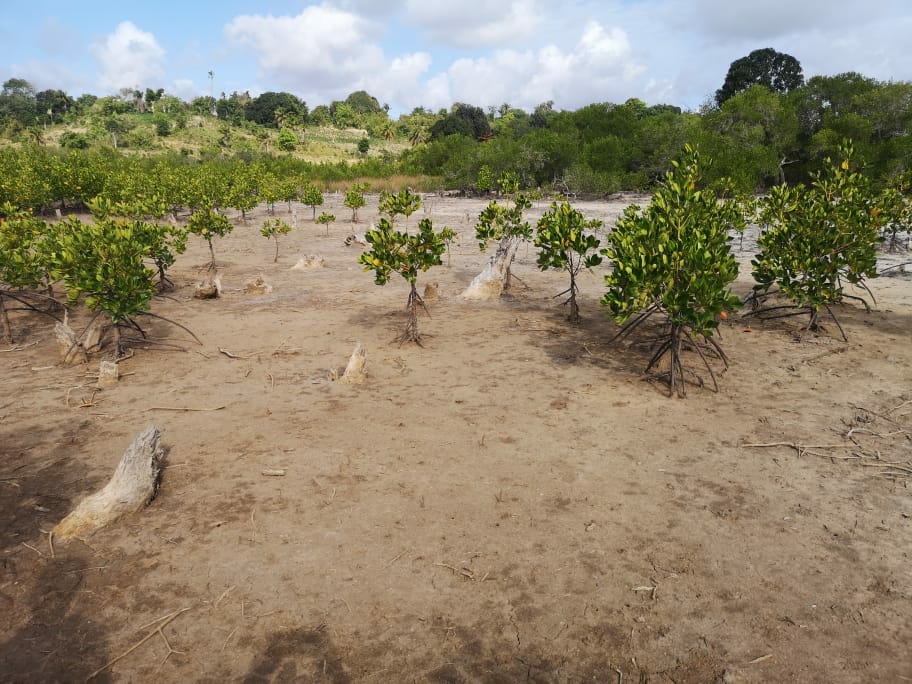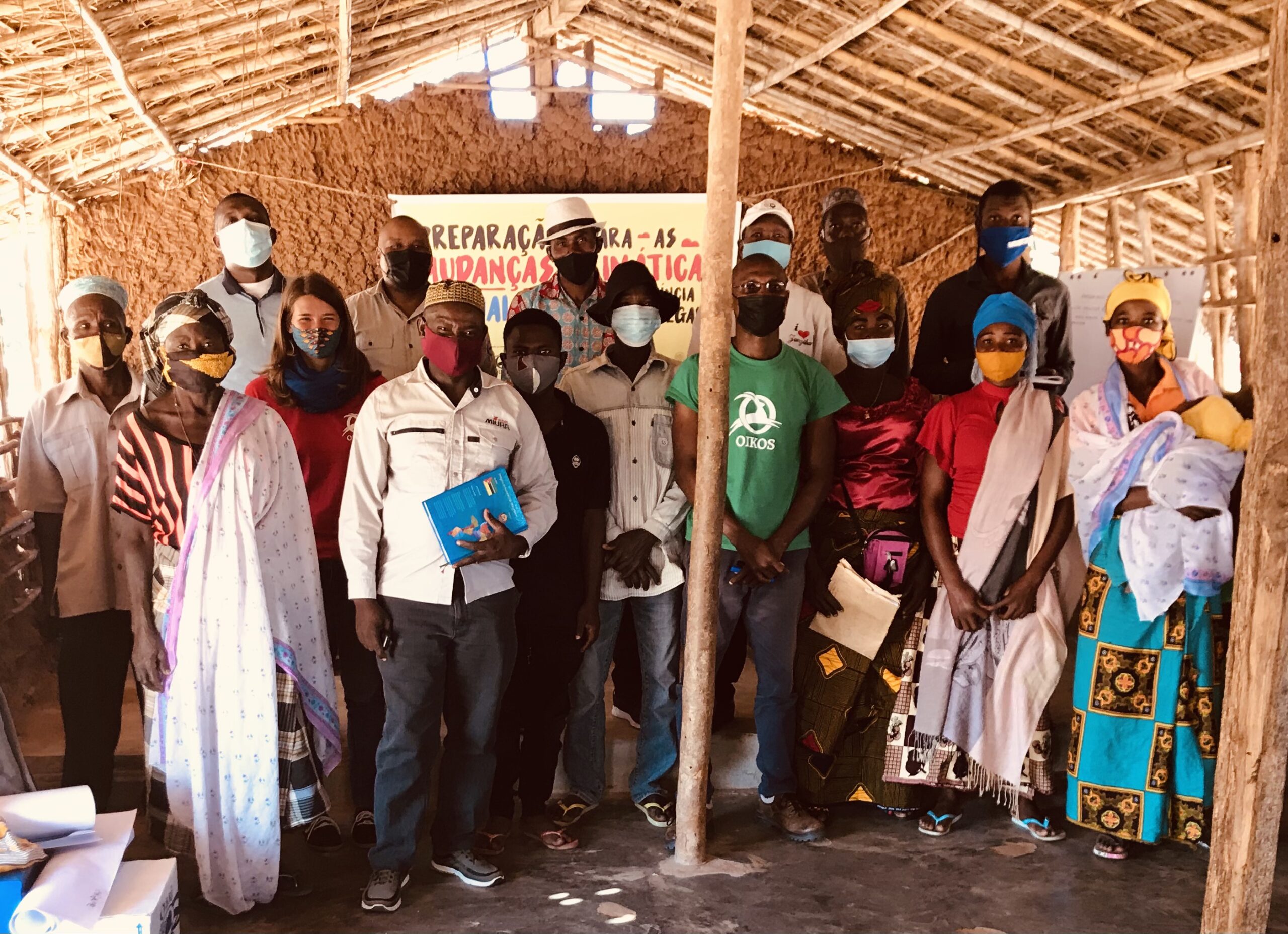Restoring the Mangroves of Mozambique
By Rebecca Jacobs, Posted on September 23, 2021
Expanding Our Roots
At the end of 2020, we announced that Community Forests was going to expand our reach to Mozambique. Last month a small team from Community Forests Pemba travelled to Mozambique as expert advisors to help build climate-adaptive livelihoods and community-led mangrove restoration.
This is the first of many collaborations for Community Forests. The team will be working alongside the project partner, Istituto Oikos Onlus, to help develop successful community-led restoration and protection projects across Mozambique’s coastline.

Restored mangroves near Milamba Village, Mozambique.
Threatened mangrove forests
The coastal mangroves of Mozambique share many similarities with the mangroves of nearby Zanzibar. Increasing coastal development, over-farming, salt production and deforestation are some of the main threats to these vital coastal forests. With over 45% of the population living below the poverty line, communities of Mozambique often rely on natural resources and forests for construction materials, income, and firewood–activities that can deplete nearby mangrove forests. Working alongside communities to develop climate-adaptive livelihood alternatives is key to the future of these forests.
In 2000, Cyclone Eline—the longest-lived cyclone on record in the Indian Ocean—destroyed over 60% of the mangroves near Limpopo River estuary, leaving communities without a source of livelihood or protection from more flooding and coastal erosion. Just like Zanzibar, the country’s mangroves are invaluable natural protection against flooding. In a country where 60% of the population lives along the coast. As the climate crisis leads to increasing sea-level rise and the likelihood of extreme storm events, these vital forests are needed more than ever.
On the ground
Over the course of a week, Community Forests Pemba’s Executive Director, Mbarouk Mussa Omar, and Enterprise Officer, Omar Msellem, met with government officials, NGO representatives, and community groups to learn more about local challenges and to share their experiences and learnings from our decade-long work to further mangrove restoration and build sustainable livelihoods in Zanzibar.
With the project partners and government representatives, the Community Forests team discussed how our work in Zanzibar is founded on community engagement; how community leaders are growing awareness and action; and how restoration work can adapt to future challenges moving forward in the climate crisis.

Community Forests’ attended a community meeting in Sambene, one of a number of consultation meetings.
We know that the most successful restoration projects are those that build community capacity and existing strengths. By better understanding the local social and ecological context, Community Forests’ will be able to adapt strategies from the work in Zanzibar to suit the local context.
Over the week-long trip, Mbarouk and Omar participated in numerous community awareness and consultation meetings held with participants from villages’ development committees. These meetings were held with the goals of (1) better understanding communities’ knowledge on climate change adaptation; (2) the current state of their mangrove forests; (3) challenges to mangrove protection; and (4) ongoing strategies to restore their forests.
Finally, the team visited a mangrove planting site outside Milamba Village in the Cabo Delgado Province, where Mbarouk led a demonstration on community planting techniques and best practices, helping to plant 100 new mangrove seedlings on the site!

Community Forests Pemba Executive Director, Mbarouk, demonstrates mangrove planting techniques to community members from Milamba.
What’s next?
In late October of 2021, a team of delegates from Mozambique will be visiting Zanzibar to see Community Forests’ growing mangrove forests, and to see community-led restoration in progress.
P.S. Read more about the mangrove restoration work in Zanzibar.
